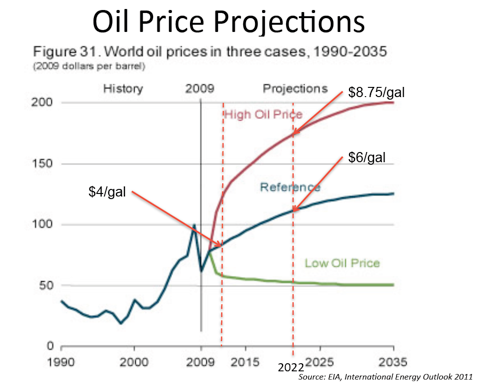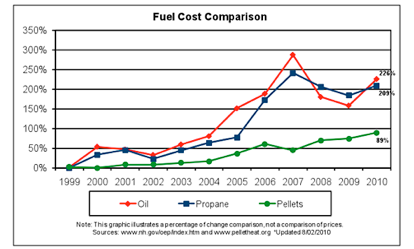Juneau Commission on Sustainability
Menu
Oil
Juneau is blessed with abundant hydroelectricity due to our topography and high levels of precipitation, so it’s easy to overlook the fact that currently approximately 80% of Juneau’s energy is derived from nonrenewable petroleum. We use petroleum to fuels our vehicles and equipment, vessels and aircraft serving Juneau depend on it, and we use it to heat the large majority of our homes and buildings. Additionally, there’s petroleum-derived energy ‘embedded’ in all of the goods and materials that are shipped to Juneau via barge or airfreight. There are few places in the world more reliant on petroleum than Southeast Alaska.

Source: Juneau Climate Action Plan
This heavy reliance on petroleum-derived energy makes Juneau highly vulnerable to oil price spikes and supply disruptions. The price of oil is increasing much faster than the rate of inflation – over the past decade the price of heating oil has risen at nearly 13% annually while the rate of general inflation has averaged less than 2.5% per year. Over the past 25 years, oil prices have increased at about 7.5% annually. In addition, the price of oil has been extremely volatile – in 2007/2008 the price of oil more than doubled in a single year.

The rising oil prices pose a serious threat to Juneau’s economic sustainability, taking an every larger bite out of the budgets of Juneau households, businesses, and governments. U.S. Department of Energy projections indicate that within ten years the price of heating oil will likely be $6 per gallon (in today’s dollars), and could exceed $8 per gallon. But energy price predictions are notoriously inaccurate, and in today’s world with energy markets tightly interconnected, an unpredictable disruption far from Juneau could significantly impact our energy economy.
Oil is also a nonrenewable resource. While there has lately been considerable media coverage of recently discovered oil reserves such as shale oil in the Lower-48 and offshore oil in the Arctic and tar sands in Alberta, the fact is that most existing oil fields in the world are following a predictable pattern of declining output. Alaska’s Prudhoe Bay oil field is producing one fifth of the daily output that it was at its peak. Discovering and extracting new sources of oil requires increasingly sophisticated technologies, and comes with increasing risk, as the oil is located deep undersea or in Arctic waters. These extraordinary efforts come at an economic cost, reflected in the inexorable rise in oil prices.
Oil and petroleum based fuel sources (fossil fuels) have demonstrated the largest actual cost and percentage cost increases over the last decade. While the causes of these fossil fuel cost increases are multi-faceted, the impact of world supply and demand as a commodity is the primary cause.
Price inflation is an important factor when considering energy sources, but price volatility, the change in price from month to month, year to year, can often have an even larger impact on household and business operating budgets. The graph below illustrates the volatility in oil and propane prices compared to wood pellet prices over the past decade. The price volatility for hydropower in Juneau has been even lower.
Fuel Cost Comparison 1999-2010

- Fuel Oil Cost Growth 1999 to 2010 = 226%
- Propane Fuel Cost Growth 1999 to 2010 = 209%
- Pellet Fuel Cost Growth 1999 to 2010 = 89%
- Juneau Electricity Rate Growth 1999 to 2011 = 27%
